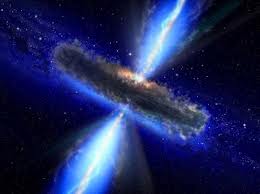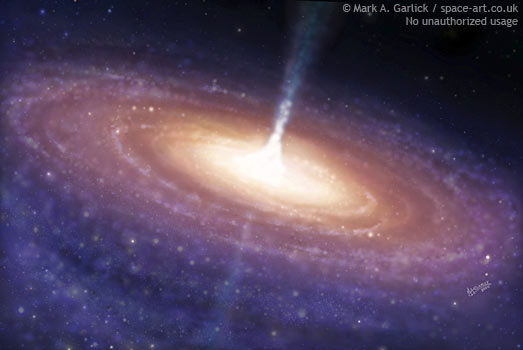The Aim
Investigation of nature of the emitting ionized gas in galactic nuclei is one of important subjects in astrophysics today. Firstly, investigating the processes in the central parts of these objects, we can learn about the innermost parts of other 'normal' galaxies. Secondly, AGN are the most powerful sources, located at different cosmological time-scales, and their investigation is cosmologically important. Finally, a part of emission from these objects (e.g. in the X-rays) has its origin very close to a massive black hole, and investigation of this emission can help us understand the physical processes in a strong gravitational field. On the other side, a number of AGN are affected by gravitational lensing effect.

Gravitational lensing is in general achromatic: the deflection angle of a light ray does not depend on its wavelength. However, the wavelength-dependent geometry of the various emission regions may result in chromatic effect. Studies aimed at determining the influence of microlensing on spectra of lensed quasars (hereafter QSOs) ought to account for the complex structure of the QSO central emitting region. Since the sizes of the emitting regions are wavelength-dependent, microlensing by stars in a lens galaxy will lead to a wavelength-dependent magnification.

Many interesting details about the physics of processes that are taking place within AGN can be identified in the signal of their emitting regions (as e.g. Broad Line Region- BLR), but they suffer from a still missing complete picture of the complex kinematical and thermodynamical properties of the line emitting plasma. Since it is not yet possible to directly observe the spatial distribution of the broad line emitting medium, al though many important achievements were obtained in the angular resolution of AGN cores at radio wavelengths, spectroscopic data are still the most useful way to investigate physics within the central part of an AGN.
The format of the workshop:
The Meeting is planned to have seven review lectures, devoted to the special topics on spectroscopy of AGN and gravitational lenses. Following the lectures, participants will work on the special mini-projects, which will be happening during the whole day. The aim of the workshop is to publish the mini projects results in international scientific journals. If you would like to participate in a Mini project and/or to propose a new Mini project please fill in the registration form (link) and send it to sasa.simic@pmf.kg.ac.rs until September 15, 2019. Proposed titles for Mini projects are listed in the Mini projects page.
Scientific Organizing Committee
Luka Ć. Popović (Astronomical Observatory, Belgrade, Serbia) - cochairman
Saša Simić (Faculty of Sciences, Department of physics, University of Kragujevac, Serbia) - cochairman
Victor Afanasiev (Special Astrophysical Observatory, Russia)
Milan S. Dimitrijević (Astronomical Observatory, Belgrade, Serbia)
Dragana Ilić (Faculty of Mathematics, University of Belgrade, Serbia)
Darko Jevremović (Astronomical Observatory, Belgrade, Serbia)
Predrag Jovanović (Astronomical Observatory, Belgrade, Serbia)
Wolfram Kollatschny (Institute for Astrophysics, University of Goettingen, Germany)
Andjelka Kovačević (Faculty of Mathematics, University of Belgrade, Serbia)
Evangelia Lyratzi (University of Athens, Greece)
Evencio Mediavilla (Instituto de Astrofísica de Canarias, Spain)
Vladimir Srećković (Institute of physics, Zemun, Serbia)
Jian-Min Wang, (Key Laboratory for Particle Astrophysics, Institute of High Energy Physics, China)
Alexander Zakharov (Institute for Theoretical and Experimental Physics, Moscow, Russia)
Local Organizing Committee
Saša Simić (Faculty of Sciences, Department of physics, University of Kragujevac, Serbia) - cochairman
Dragana Ilić (Faculty of Mathematics, Belgrade, Serbia)
Isidora Jankov, (Departmet of Physics, University of Novi Sad, Serbia)
Andjelka Kovačević (Faculty of Mathematics, University of Belgrade, Serbia)
Jelena Kovačević Dojčinović, (Astronomical Observatory, Belgrade, Serbia)
Maša Lakićević (Astronomical Observatory, Belgrade, Serbia)
Sladjana Marčeta Mandić (Faculty of Mathematics, University of Belgrade, Serbia)
Marko Stalevski (Astronomical Observatory, Belgrade, Serbia)